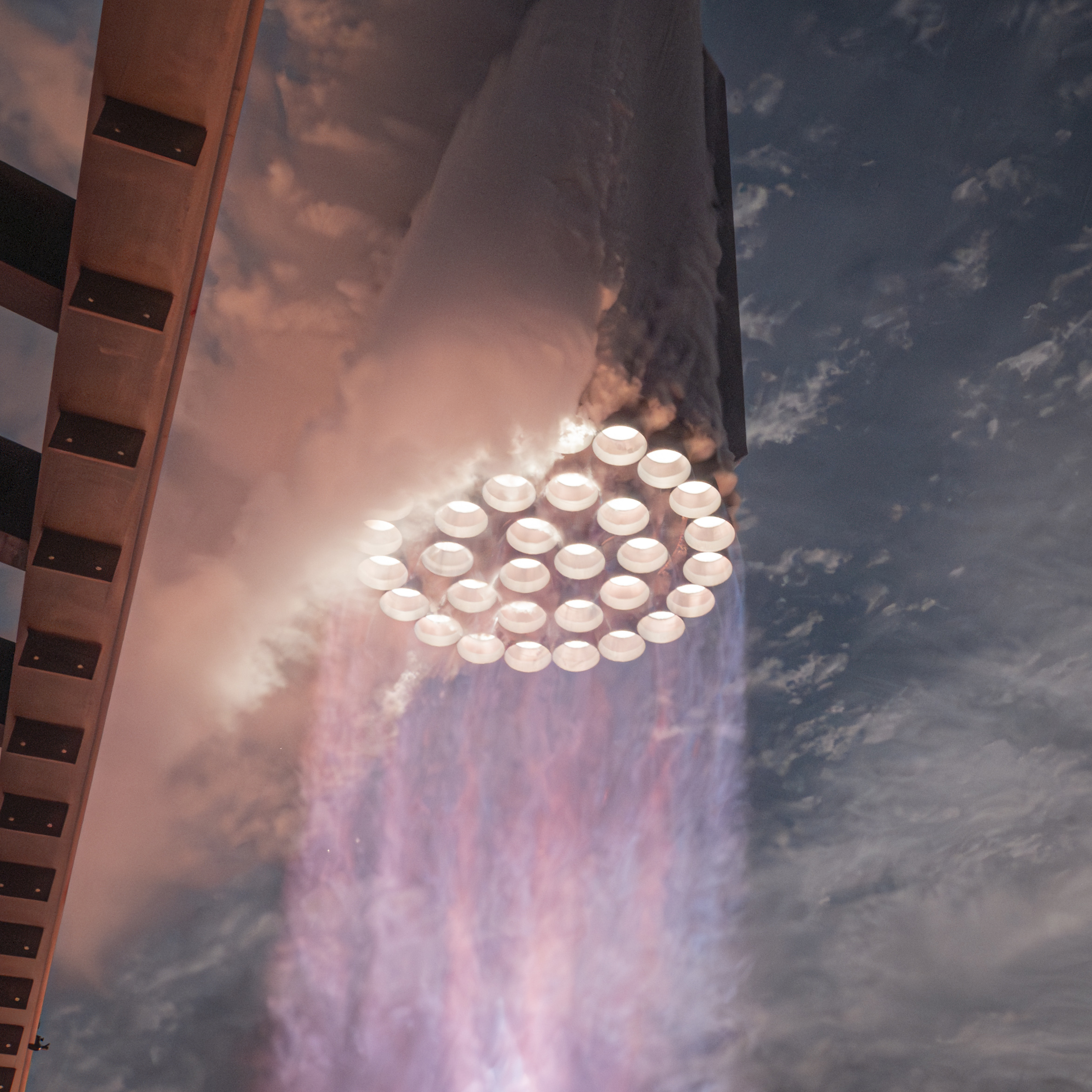Latest News

33 Raptor engines light up during SpaceX’s third Starship flight test. Photo: SpaceX
SpaceX’s Starship rocket successfully launched to space for the first time and maintained a suborbital trajectory before it was destroyed while attempting to return to Earth on Thursday morning. The third flight test progressed farther than either of the previous flight tests.
Thursday’s test took place just one day after the Federal Aviation Administration (FAA) granted SpaceX authorization for the launch, determining SpaceX “met all safety, environmental, policy and financial responsibility requirements.”
Starship took off from Starbase in Boca Chica, Texas, on Thursday morning at 8:25 a.m. Central time. After liftoff, all 33 Raptor engines on the Super Heavy booster successfully ignited. SpaceX live-streamed the test from Starlink terminals installed directly on the vehicle, providing high quality video throughout the test.
The vehicle continued to stage separation where it executed a successful “hot stage” separation, in which the Starship second stage engines ignited and pushed the spacecraft away from the booster.
After separation, Starship successfully ignited all six onboard Raptor engines and continued on its mission. Meanwhile, Super Heavy began to perform a “boost back” burn to return to the Gulf of Mexico. This surpassed its progress in the previous test, when it broke apart right after stage separation. While the Super Heavy booster made it farther than the booster used in the second test flight and lit several engines for its first landing burn, the vehicle broke apart at about 462 meters in altitude, just under seven minutes into the mission.
Starship continued a six-minute engine burn in a controlled ascent, its first full-duration ascent burn. It also powered down the engines after the insertion burn. The test achieved the goal of Starship coasting in a suborbital trajectory, surpassing the performance of the previous Starship. Also while in the trajectory, Starship opened a door called the “pez dispenser” to test the command to deploy payloads, such as Starlink satellites on future missions.
There were a number of other tests underway, SpaceX tested the commands for a propellant transfer demonstration, which will be needed for missions for NASA’s Artemis program to refill the propellant tanks in orbit. It was not clear how successful this test was. SpaceX also aimed to relight the Raptor engines on Starship in space after the ascent burn, but was not able to perform this test.
The Starship vehicle began reentry, but SpaceX lost contact with the spacecraft around 49 minutes into the mission, when it presumably broke up.
Like the previous tests, this one also triggered an FAA mishap investigation in order for SpaceX to return to flight. The FAA said Thursday that no public injuries or property damage has been reported.
While the launch was not completely successful, SpaceX celebrated the objectives it hit and the progress that was made beyond the earlier flights. SpaceX Communications Manager Dan Huot said he was “completely blown away” during the webcast.
“What a day. Congratulations to the entire SpaceX team. We’re farther than we’ve ever been before. We’ve got a Starship not just in space, but on its coast phase into space,” Huot said during the webcast.
NASA Administrator Bill Nelson also congratulated SpaceX. NASA has awarded SpaceX billions of dollars in contracts for the vehicle to take astronauts to the Moon in its Artemis program. “Congrats to SpaceX on a successful test flight! Starship has soared into the heavens,” Nelson said in a statement on X. “Together, we are making great strides through Artemis to return humanity to the Moon — then look onward to Mars.”
Get the latest Via Satellite news!
Subscribe Now